World 🢖 Asia 🢖 India 🢖 Maharashtra
Buddhist shrines 🢔 Religious architecture 🢔 Archaeological wonders 🢔 Categories of wonders
Wonder
Mahakali Caves or Kondivita Caves
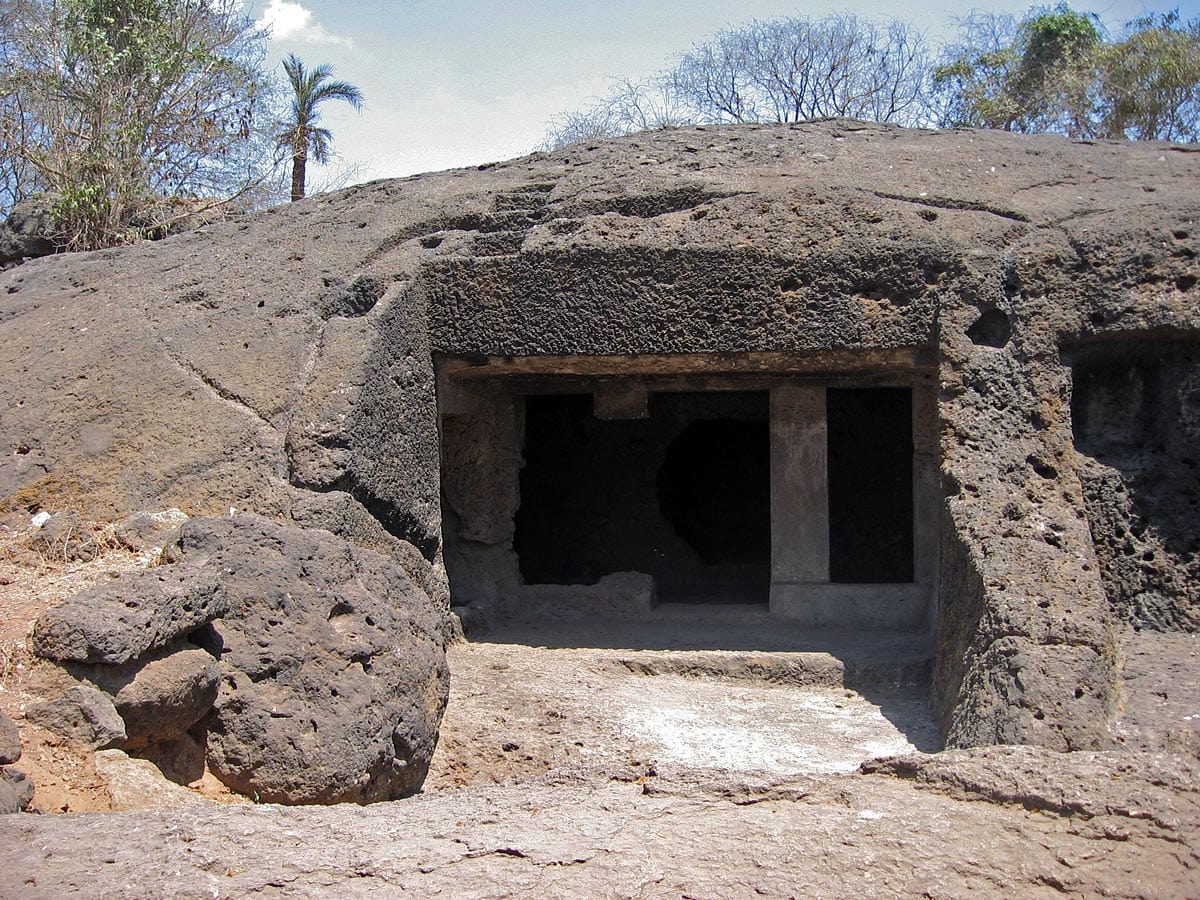
 In short
In short
Suburbs of Mumbai hide several groups of unique monuments – ancient rock-cut temples. One of such monuments is the ancient Kondivita Caves – nowadays more often called Mahakali Caves.
 36.8%
36.8%
GPS coordinates
Location, address
Writing in Hindi
Alternate transcriptions
Age
Religion
Map of the site
If you see this after your page is loaded completely, leafletJS files are missing.
 In detail
In detail
"Kondivita" is a more exact name – it comes from the nearby village. Name “Mahakali” in turn comes from the Hindu temple nearby – thus it is somewhat misleading regarding this ancient Buddhist monastery.
Rock-cut Buddhist monastery
Mahakali Caves are 19 rock-cut caves, built between the 1st century BC and 6th century AD. They are cut in black basalt. Unfortunately, this material here has not been too persistent and many caves have collapsed.
Most caves are inside a low-lying hill, rising just a few meters above the surroundings. The site contains also several rock-cut cisterns.
Caves form two rows – 4 caves from the 4th – 5th century AD on the northwest face of a long hillside and 15 caves in the southeast face.
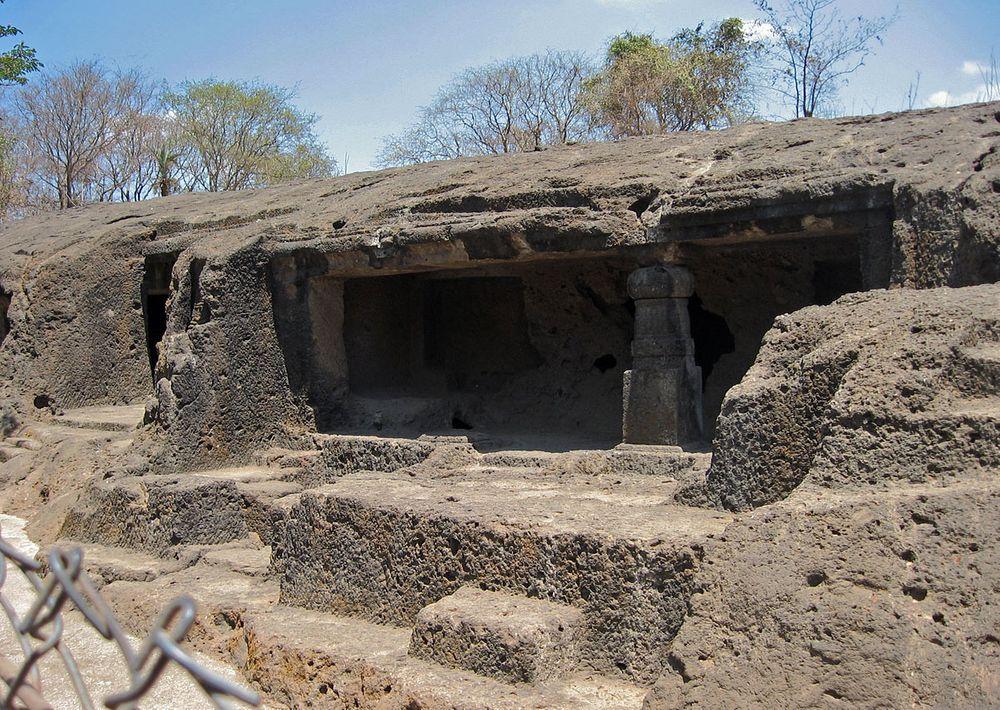
Caves are small and for the most part – very simple. The ancient dwelling of monks – viharas and cells are devoid of ornamentation what helps in meditation. Exception though is the main shrine – chaitya – Cave IX in south-eastern group.
North-western group
Cave 1 has multi-tiered entrance part. It served as a dwelling and probably was used also for meditation. Consists of a verandah with two square pillars and two pilasters. Hall with two cells behind verandah.
Cave 2 has two doors and two windows, without pillars and adornments. Possibly used as a dining hall – it has a bench around the hall.
A door connects cave 2 and Cave 3. Cave 3 has a courtyard with four steps leading up to verandah with a central door and two eight-sided pillars. Behind the verandah are a hall with cells and an ornamented doorway in the rear wall. Behind this door, there is a shrine where was located image.
Cave 4 was used as a dwelling. It has a long verandah with 10 round pillars. The hall behind the verandah has a recess in the back wall, perhaps used as a shrine. This cave contains also recent constructions by makers of illegal liquor.
Between both groups of caves there are several broken tombstones. There are several more interesting rock-cut monuments including a small auditorium for the teacher and his disciples. Further west several broken stone steps lead down to a southern group of caves.
South-eastern group
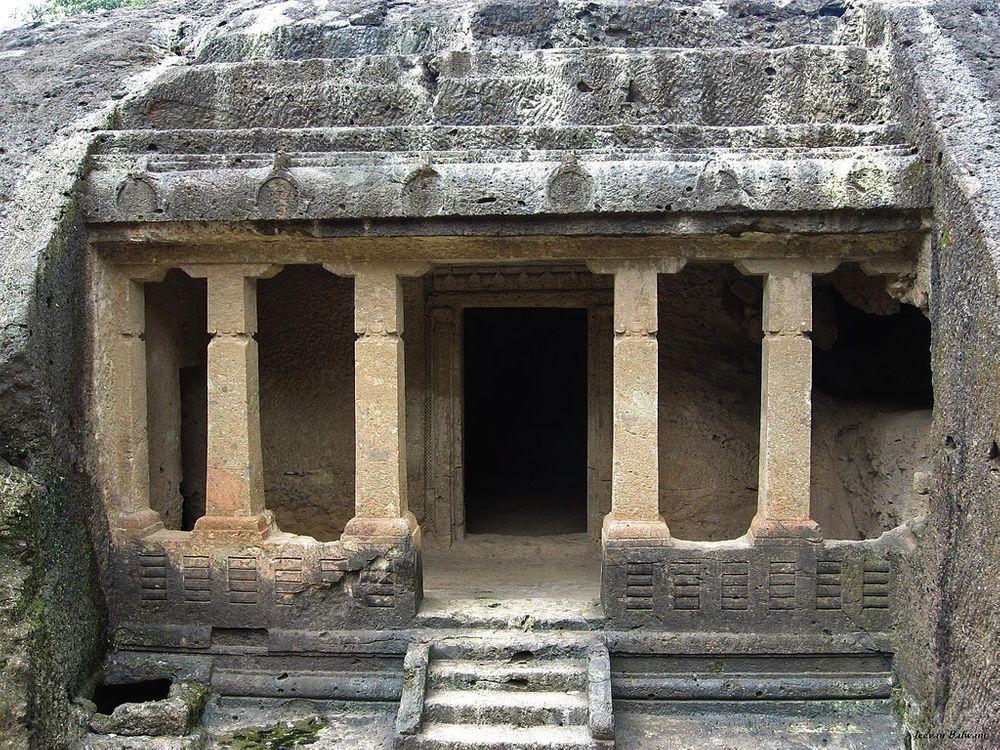
Most of the 15 caves in this group are small, unsightly, and in bad repair. These caves are numbered from west to east.
Cave I contains verandah with two pillars and two pilasters, connected to Cave II.
The verandah of Cave II has a low front wall, some 1.2 m high with four square pillars rising from it. Most likely made in the 5th – 6th century AD. The rear wall of the verandah is adorned with a belt of checked carvings. Behind the verandah is a chapel without adornment with an altar at the rear wall. Sidewalls of the chapel have sockets for wooden poles – these are now favorite sleeping berths for snakes.
Cave III – dwelling for a monk.
Cave IV is a chapel. Outside it, at the entrance, there is a roughly hewn cobra with seven hoods. It might be connected to the Sarpala or Snake pond at the foot of the hill. The chapel is entered through a verandah with four eight-sided pillars. Verandah to the left is connected to Cave III. Behind verandah is a hall with side aisles, two pillars, and three cells. At the rear wall is a shrine. This cave is possibly made in the 3rd – 4th century AD.
Cave V is small dwelling of monk, consists of verandah and cell.
Cave VI consists of verandah and small cells at it.
Cave VII consists of verandah with side cells and shrine at rear wall.
Cave VIII is small cave which is entered through from Cave VII.
Largest cave – chaitya – is Cave IX. Locals sometimes call it Anasicha Kamara – granary – due to semicircular shrine which resembles granary. Most likely it is the oldest of Mahakali Caves and certainly the most interesting one. The cave consists of the partly ruined verandah which leads into 7.6 m long, 5.3 m wide, and 2.74 m high hall. The right wall of the hall is adorned with mutilated figures. The left wall though contains remnants of later Buddhist sculptures, possibly from the 6th century AD, including seated Buddha teaching two attendants. Above him is seen a row of six smaller Buddhas. Also, these sculptures have been damaged.
Rear wall has an entrance in a semicircular shrine with a hemispheric dome, divided by a cleft in the rock. Dome rises up to 4.42 m in height. It resembles similar half-domes of rock-cut shrines in Barabar Caves.
In the center of the shrine stands relic – 2.34 m high dagoba with four holes on the top for umbrella.
Outside the shrine in earlier times there were two lines of Pali inscription – now it is barely visible. Letters of the inscription are from the 3rd century AD.
Inscription reads: "Gift of a Vihar, with his brother, by Pittimba a Brahman of the Gotamas gotra, an inhabitant of Pachi Kama.".
It contains mutilated sculptures – seven depictions of Buddha and other figures of Buddhist mythology. It contains a shrine with a stupa now erroneously considered to be a lingam. Shrine has a hemispheric dome. Most likely Makahali Caves started with this structure.
Cave X is dwelling for monks.
Cave XI consists of a small, ruined verandah with two simple pillars and chambers – dwelling of monks and passage cut in the rock.
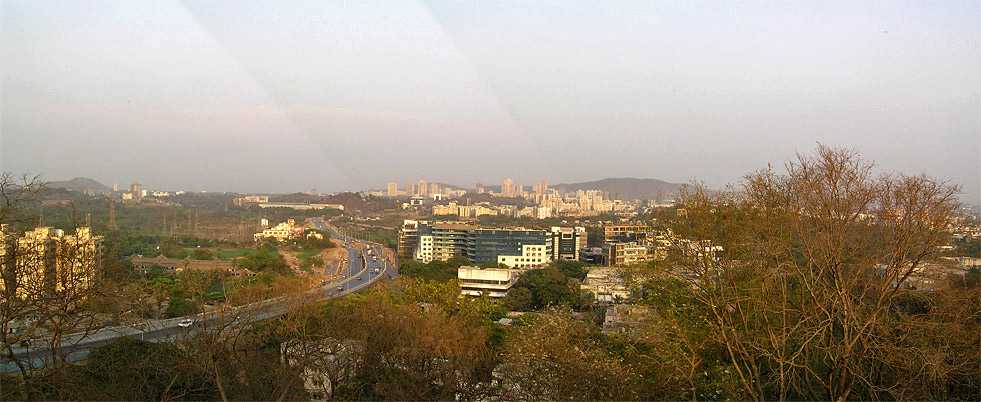
Cave XII is in bad condition, nearly ruined. It consists of verandah and opening in the eastern part – earlier there were three cells and a chamber to the left. The cave is adorned with a belt of ornament.
Cave XIII now is united with Cave XII. It consists of a courtyard which by a flight of five steps leads to the verandah. Verandah has outer and inner parts with two pillars and two pilasters. After the inner verandah is accessed a rather large hall – 8.84 x 8.74 m large. It contains three cells. In the center of the hall, there are four large eight-sided pillars with rounded capitals. The rear wall contains a central shrine.
Cave XIV is just a small cell.
Cave XV is blocked by a large block of basalt rock. This cave had a verandah with two pillars, inner and outer chambers.
Neglected and then saved
The ancient Kondivita monastery recently was endangered by neglect. At some time these caves were used by illicit liquor distilleries and sex workers but recently there started certain protection of these caves. Caves are encroached by shanty towns, but this was brought in order too.
References
- Lyla Bavadam, In a shambles, Frontline, Volume 26, Issue 15, Jul. 18-31, 2009. Accessed on June 19, 2010
- Grgeater Bombay District, places, Maharashtra State Gazetteers. Accessed on June 19, 2010
 Linked articles
Linked articles

Wonders of India
India is the seventh-largest country in the world by area, and, naturally, such a large area contains a huge amount of exciting attractions…
Wondermondo considers that India is the second richest center of architectural heritage in the world after Europe and maybe no single country in the world can match it in this respect.
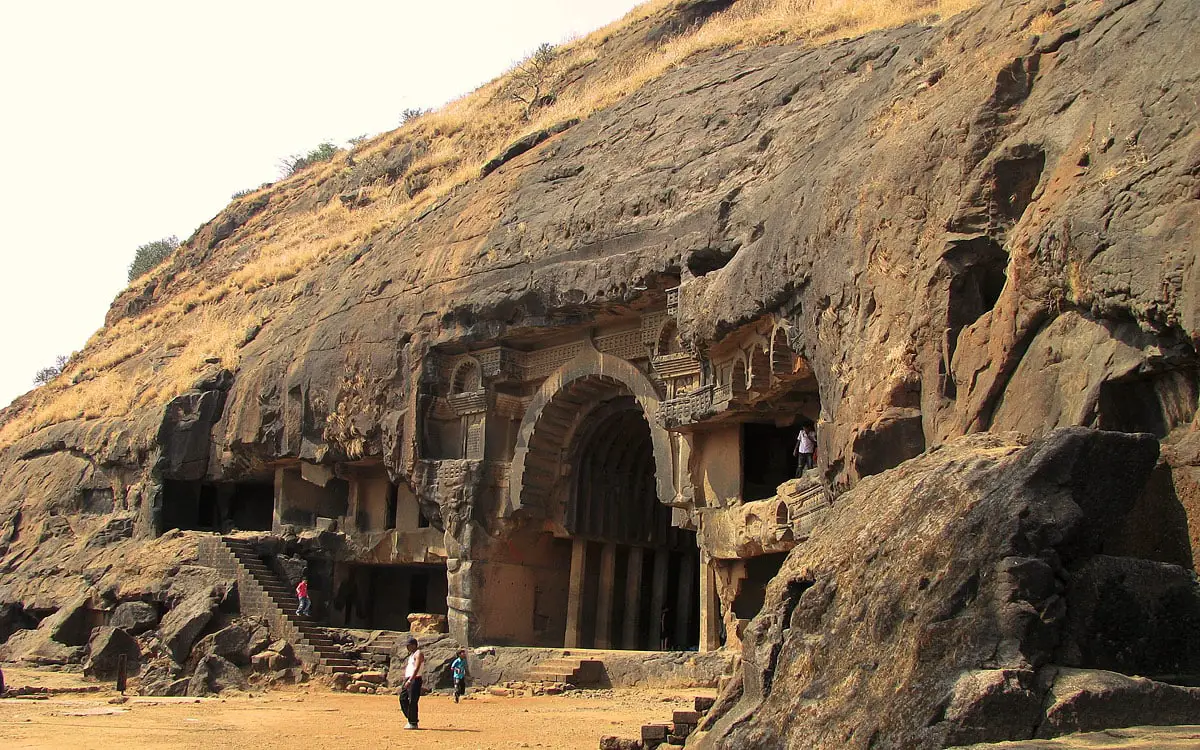
Rock-cut architecture and sculptures
Rock-cut architecture is a very ancient form of architecture – the oldest structures are more than 5 thousand years old. The resistivity of the natural stone and the constant climate inside these structures has preserved many art values around the world.

Buddhist shrines
Buddhism is one of the world religions and at the same time is a spiritual philosophy with diverse traditions, beliefs, and practices. There exists a rich tradition of architecture expressed in Buddhist temples and monasteries.
 Recommended books
Recommended books
In The Orient
The stories in this collection are in general set in India, Southeast Asia, and Indonesia, places to which the author traveled while living and teaching in Japan, a country which is situated in such a way so that it provides a gateway to other countries in the Far East.
Illustrations Of The Rock-cut Temples Of India
This is a reproduction of a book published before 1923.
We believe this work is culturally important, and despite the imperfections, have elected to bring it back into print as part of our continuing commitment to the preservation of printed works worldwide.


